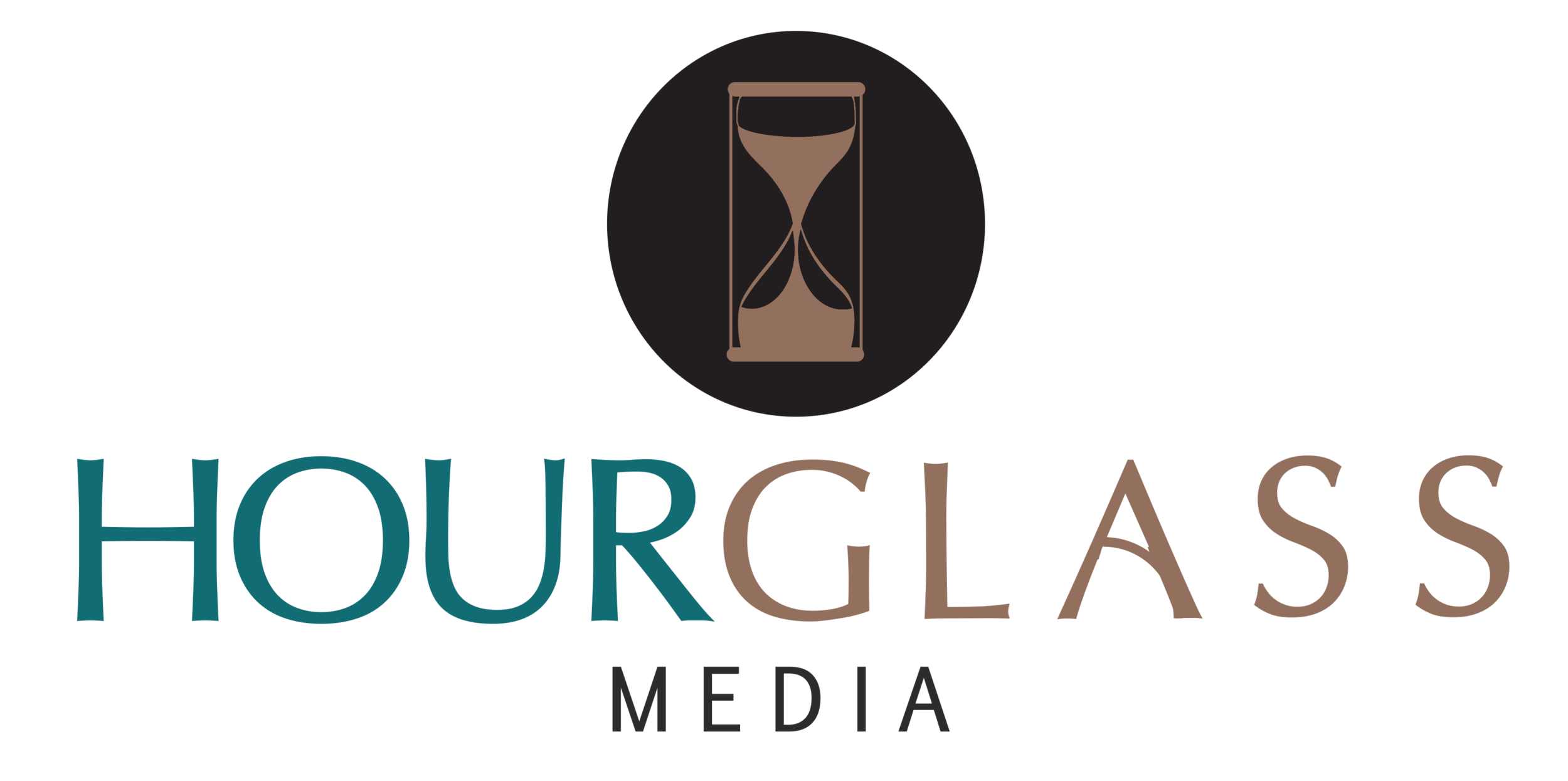How to Write Your Own Children's Book
⌛ By Kaylin R. Staten ⌛
Hourglass Omnimedia prides itself on telling others’ stories. One of the ways we effectively communicate is through the written word. In 2016, our self-publishing house released From Granny’s Kitchen, a recipe compilation based on recipes from my Granny, Wanda Dean.
Now, we have another published work to add to our repertoire, Plastic Cupcakes. I wrote a short story with the same title when I was a sophomore in high school, and the story centered on my childhood days with my sister. We are five years apart and spent our childhoods playing with our toys, watching our favorite movies and talking at all hours of the night.
Plastic Cupcakes is a reflection of that time period but with a next-generation twist. It’s a counting book for Aunt-Niece duos (or trios, etc.) that showcases the fun and unique bond between an aunt and her niece. When my niece, Aubree, was born on August 2, 2017, I knew I wanted to commemorate her birth by writing her a story. Thus, Plastic Cupcakes was also born.
If you’re interested in writing -- and perhaps even self-publishing -- your own children’s book, here are some tips to help you throughout the process:
Don’t be afraid to channel your inner kid.
One of the hidden keys to creativity is never growing up. Most of us “adult” every day, so it’s refreshing to write a children’s book. Remember all of the toys and games you used to play when you were little? Which books you read, shows you watched, places you visited? Use those as inspiration for your children’s book. For Plastic Cupcakes, my inspiration arose from a photograph of my sister and me in the kitchen with a quilt having a “picnic” and pretend eating plastic cupcakes. Use your memories, interests, popular culture, favorite words, family members and more to brainstorm ideas and cultivate your own children’s story. The more colors, numbers and fun words, the better!
Plan out your book with a storyboard.
Organization is vital to the writing and planning process. After you write the story (or even while you are still writing), plan out each spread. What is your theme, color scheme, overall message/call to action, artwork style? One of the most essential elements is figuring out which type of children’s book you want to write. Are you interested in the newborn-to-one-year phase or do you want to craft an elementary-school-age chapter book? Whether you do the artwork yourself or outsource it to an illustrator, being as plan-oriented as possible will serve you well in the long run. For Plastic Cupcakes, I wanted a purple-and-green color scheme (specifically, Radiant Orchid and Greenery Pantones) with watercolor and magazine cutout styles. Use a font to make it easy to read for little ones!
Look at children’s books in stores, online and in libraries.
During the beginning stages of Plastic Cupcakes, I looked for ideas everywhere, whether it was in the form of the Fisher Price plastic cupcakes of my childhood to other writers’ works. You will be able to see how they structure their books, their writing/illustration styles, how many pages of content you will need to write and more. You can find inspiration in the most unexpected ways, too. (Hello, magazine cutout design from Billboard Magazine.) Do something that makes your work unique and try to find gaps in the current children’s book market.
Take a children’s writing course and use free resources.
When you reach adulthood, it could be challenging to find your inner child (see number 1). A course, YouTube tutorial, message board, Pinterest post or other research will serve you well in your endeavors. I took a free writing online children’s writing course through my local library. I recommend taking at least one course to freshen up your children’s writing skills. Check your local library’s website to see if there are free eCourses available to you. All you need is a valid library card!
Beta test the book with your key audience.
The first time I read the storyboard to my niece, she cried. And it wasn’t a happy cry. (Just to be fair, she was only a few months old when she first heard the story.) I have read it to her a lot, even to the point that I have memorized the content! What better way to see if your story and illustrations resonate with your target audience than to do a beta test? Our first intern, LeAnna Owens, also edited the book prior to its release as well. Even if you can’t test it out on your child audience or don’t have anyone to edit your book, read it out loud to see if the words flow and it sounds the way you want it to. Reading your works out loud does wonders during the editing process!
Plastic Cupcakes is available now on our website and will be sold with major retailers soon!
Copyright © MMXVIII Hourglass Omnimedia, LLC
Kaylin R. Staten is an award-winning public relations practitioner and writer. She owns Hourglass Omnimedia, a consulting company based in Huntington, WV.
⌛ ⌛ ⌛
